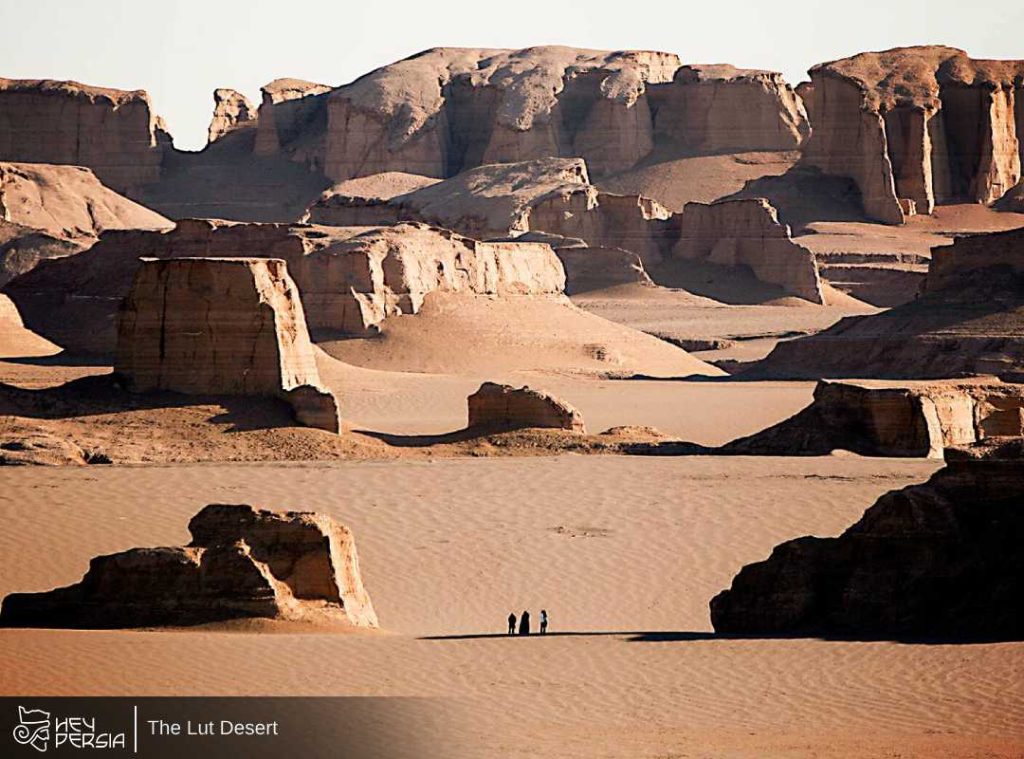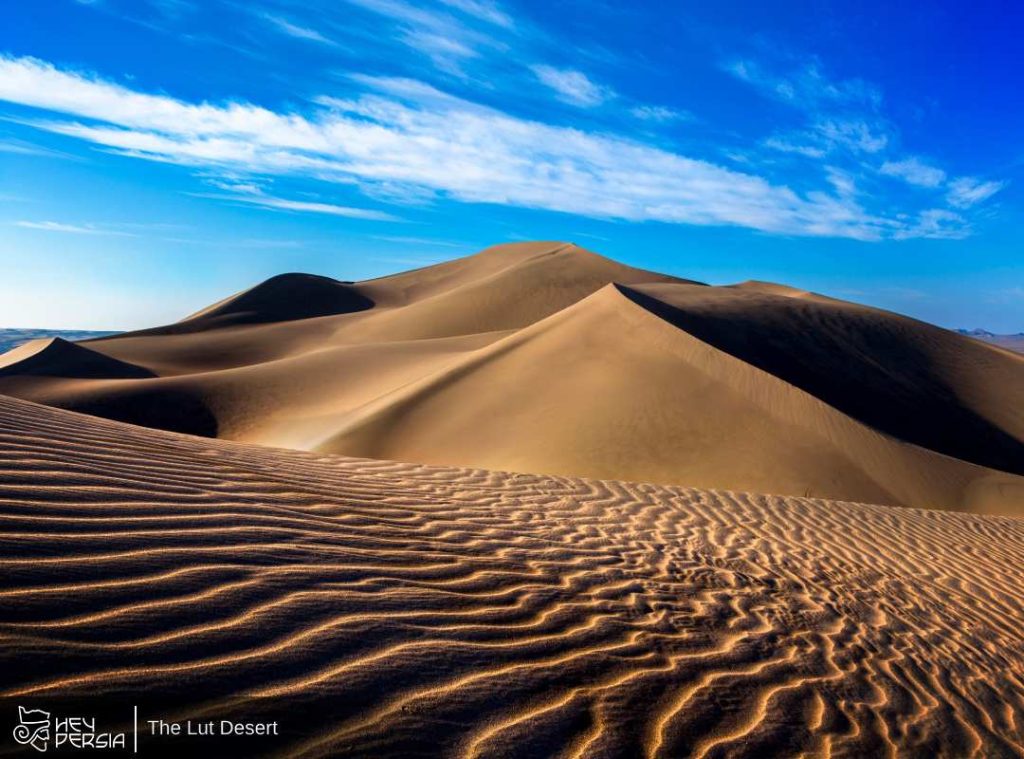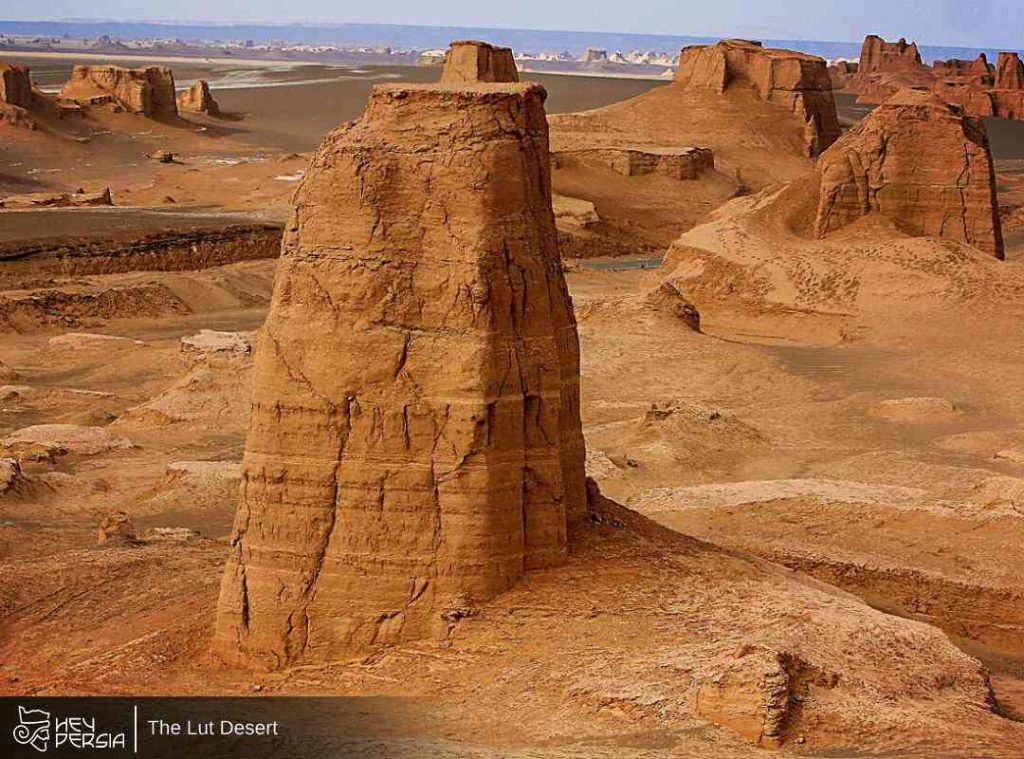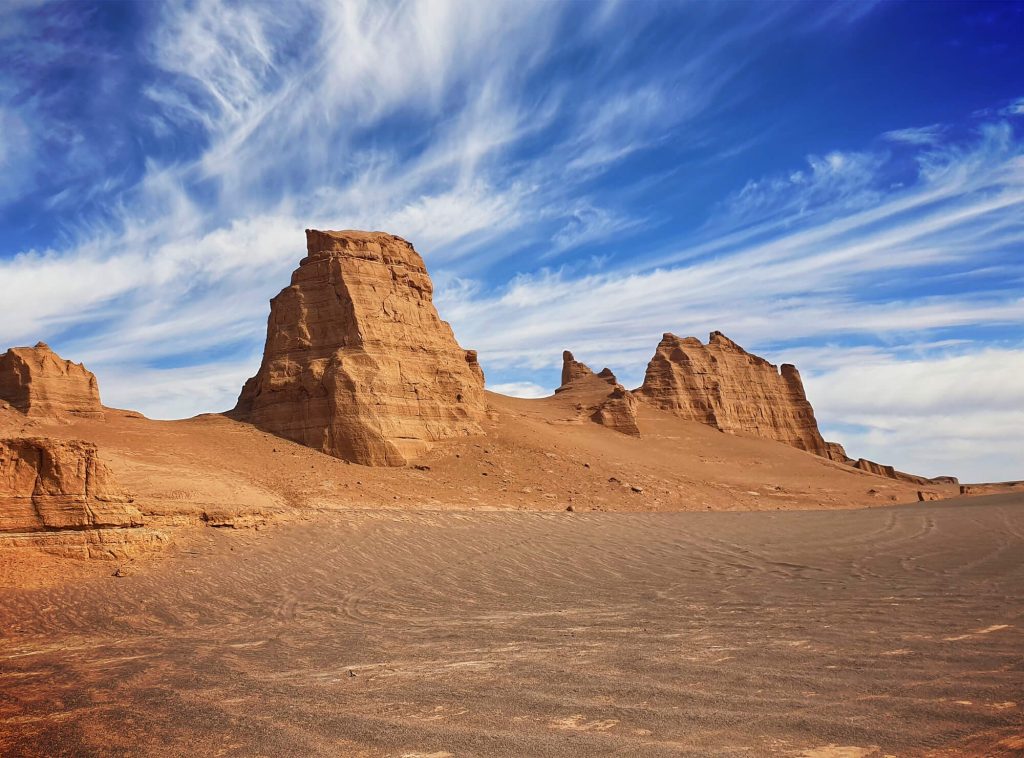The Lut Desert in Iran, or Dasht-e Lut, stands as one of Iran’s most captivating natural wonders. Located in the southeast of the country, this vast desert spans parts of Kerman and Sistan-Baluchestan provinces. Its extreme temperatures, unique geological formations, and striking landscapes make it a remarkable destination for adventurers and scientists alike. Recognized as a UNESCO World Heritage Site, the Lut Desert showcases nature’s raw beauty and resilience. Stay with Hey Persia to learn more.
Table of contents
Geography and Climate of The Lut Desert in Iran

The Lut Desert stretches across approximately 51,800 square kilometers, forming a dramatic expanse of sand, rock, and salt flats. Its location in Iran’s arid interior creates some of the planet’s most extreme conditions. Summer temperatures often soar above 65°C (149°F), earning it the title of one of the hottest places on Earth. NASA once recorded a surface temperature of 70.7°C (159.3°F) here, a testament to its blistering environment. Winters, by contrast, bring cooler but still dry conditions, with temperatures occasionally dipping below freezing at night.
Rainfall remains scarce, with some areas receiving less than 30 millimeters annually. This aridity shapes the desert’s stark beauty, where vast sand dunes and eroded rock formations dominate the landscape. Strong winds sculpt these features, creating ever-changing patterns that captivate visitors.
Unique Landforms
The Lut Desert boasts an array of geological wonders. Massive sand dunes, some reaching heights of 300 meters, ripple across the landscape like frozen waves. These dunes, known as “yardangs,” form through relentless wind erosion, giving the desert an otherworldly appearance. In the central region, the Gandom Beryan plateau, a dark volcanic area, absorbs intense heat, contributing to the desert’s record-breaking temperatures.
Salt flats, another hallmark, shimmer under the sun, creating mirages that intrigue travelers. These flats, remnants of ancient lakes, add a surreal quality to the desert’s vastness. Rocky outcrops and eroded ridges further diversify the terrain, offering a rugged contrast to the smooth dunes.
Flora and Fauna in The Lut Desert in Iran

Life in the Lut Desert adapts to its harsh conditions with remarkable ingenuity. Sparse vegetation, including hardy shrubs like tamarisk and saxaul, clings to areas with minimal groundwater. These plants anchor the soil, preventing further erosion. Their deep roots tap into hidden water sources, showcasing nature’s resilience.
Animals, though few, thrive in this extreme environment. Desert foxes, with their large ears for heat dissipation, roam the dunes at night. Lizards and snakes, adapted to conserve water, burrow beneath the sand to escape the daytime heat. Insects, such as beetles, scuttle across the surface, surviving on minimal resources. These species highlight the desert’s delicate but tenacious ecosystem.
Cultural and Historical Significance
The Lut Desert holds cultural importance for Iran. Ancient trade routes, part of the Silk Road, once skirted its edges, connecting civilizations. Archaeological sites, including remnants of old settlements, reveal human resilience in this unforgiving landscape. Local communities, particularly in nearby villages, share stories of the desert’s mystique, blending folklore with its stark reality.
Today, the desert attracts adventurers and researchers. Its unique conditions make it a natural laboratory for studying climate change and desertification. Moreover, Tourists, drawn by its UNESCO status, explore its dunes and salt flats, often guided by locals who know the terrain intimately.
Tourism and Exploration of The Lut Desert in Iran
Visiting the Lut Desert requires preparation due to its extreme conditions. Travelers must bring ample water, sun protection, and reliable navigation tools, as the vast landscape can disorient even experienced explorers. Guided tours, often starting from Kerman, offer safe ways to experience the desert’s beauty. Camping under the star-filled sky provides a unforgettable glimpse into its serene isolation.
The desert’s allure lies in its contrasts—scorching days, cool nights, and a landscape that shifts with the wind. Photographers capture its golden dunes at sunrise, while scientists study its geological evolution. Finally, For those seeking adventure, the Lut Desert delivers an unforgettable journey into one of Earth’s most extreme environments. Additionally, Check the Lut Desert Exploration for more details.




